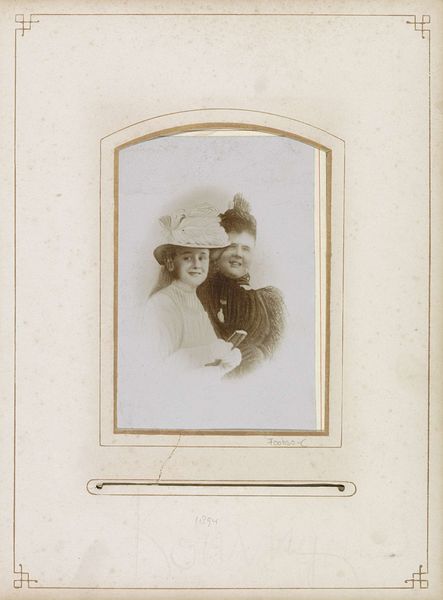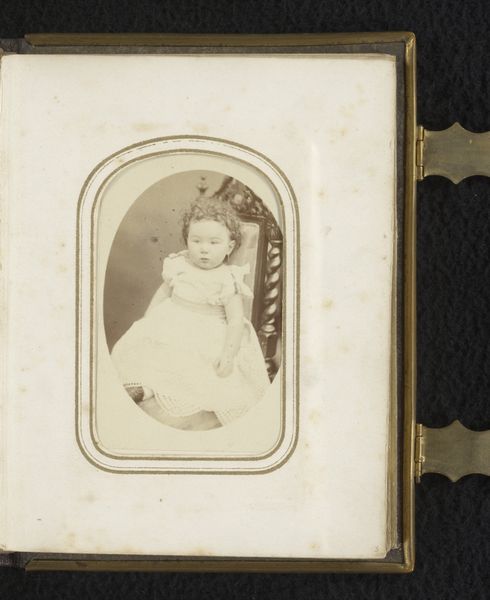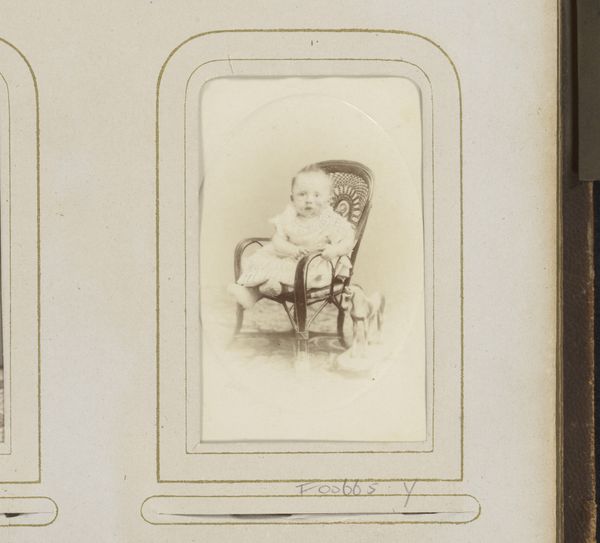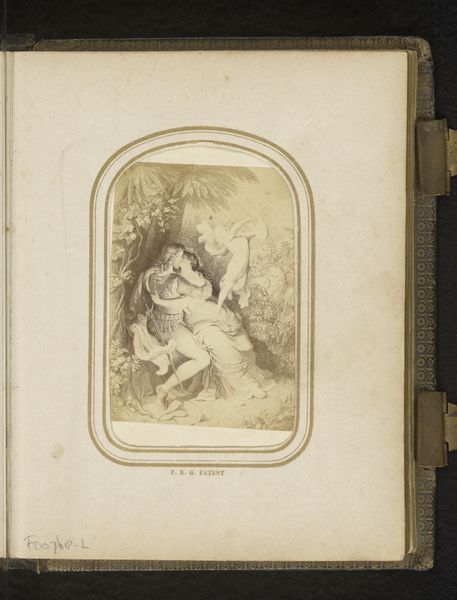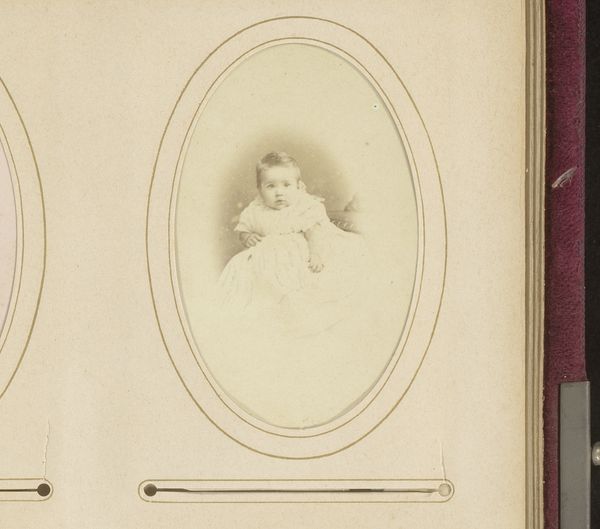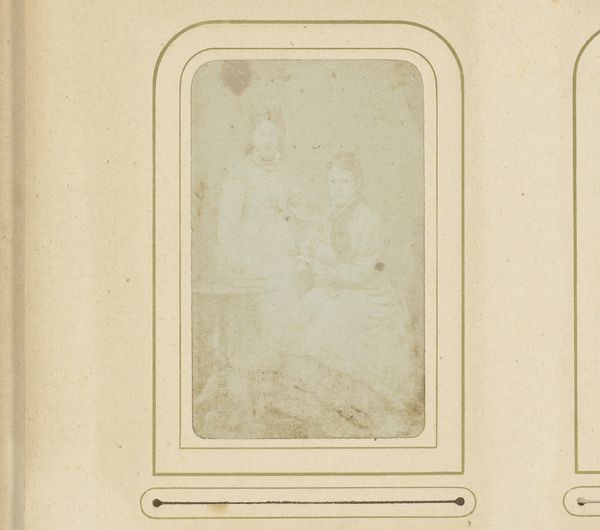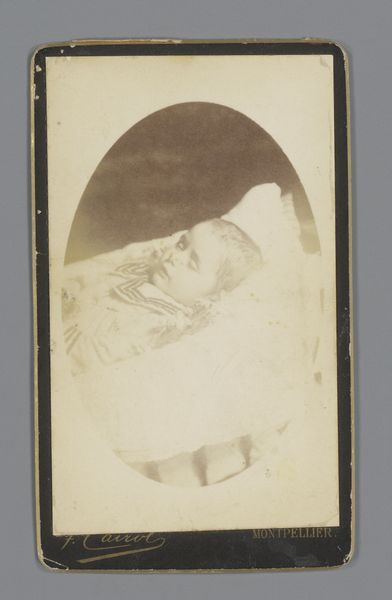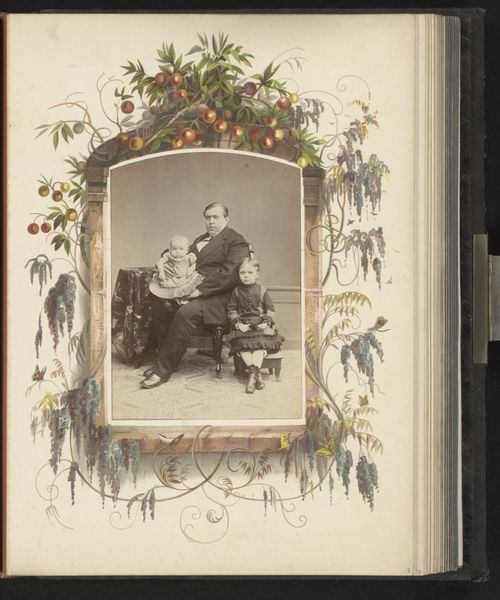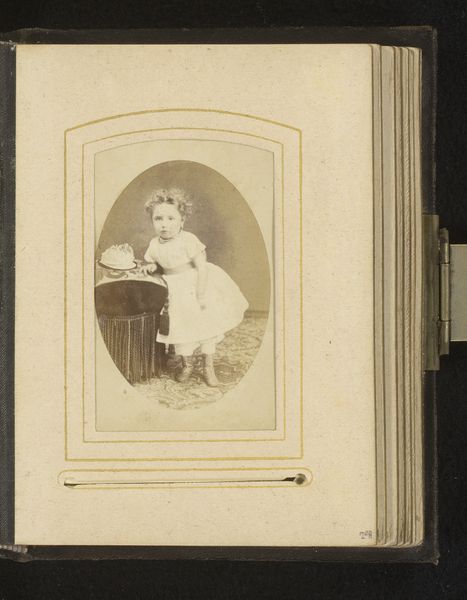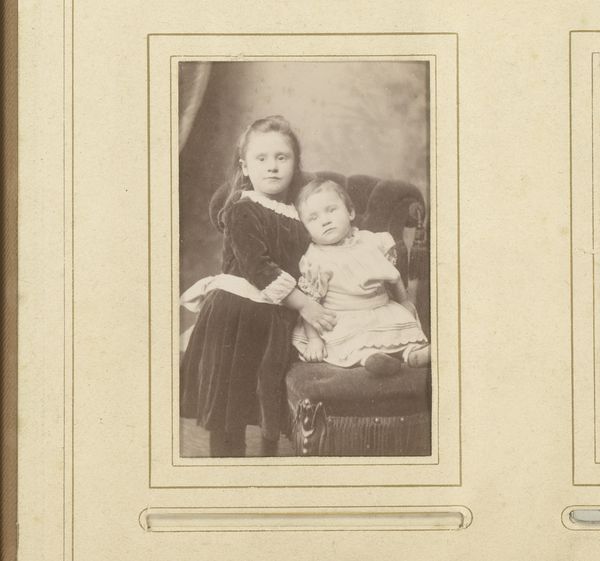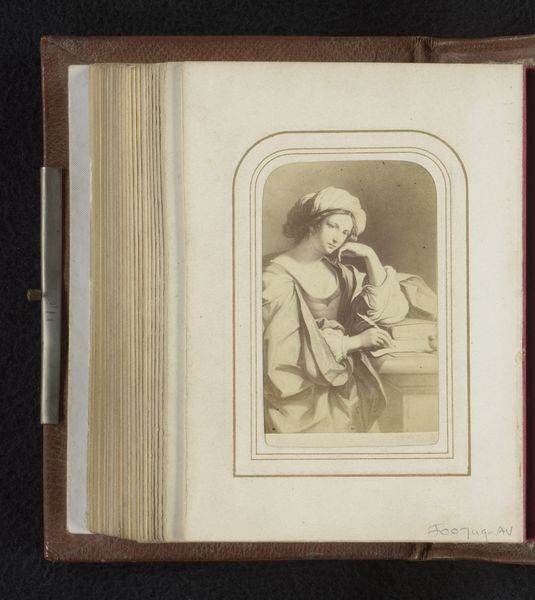
Fotoreproductie van een geschilderd portret van een moeder met baby 1868 - 1917
0:00
0:00
mmcouvee
Rijksmuseum
Dimensions: height 100 mm, width 63 mm
Copyright: Rijks Museum: Open Domain
Curator: Here we have a gelatin-silver print, dating from 1868 to 1917, titled "Fotoreproductie van een geschilderd portret van een moeder met baby", attributed to M.M. Couvée. The piece currently resides here at the Rijksmuseum. Editor: It has such a delicate feel to it. Almost like a faded dream of motherhood. The soft focus contributes to this impression. Curator: Yes, it evokes a Romantic sensibility. Interestingly, this isn’t just a photograph; it’s a photo reproduction of a painted portrait, so it's already mediated. That places the artwork in a complicated relationship with authenticity. Editor: I immediately start to consider how this mediates societal expectations of motherhood. The almost ethereal presentation aligns with historical idealizations of women as nurturers, existing in this private, almost otherworldly sphere. Curator: The photograph seems to be mounted within a larger album page; one wonders about its intended audience and purpose within that domestic context. Was this a private memento, intended for family? How did the emerging culture of photography affect the public's perception and access to portraiture? Editor: It also makes me consider accessibility. This photograph offered a somewhat more accessible mode of memorializing family, expanding visual representation of sentimental ideas to broader audiences but arguably still situated within a privileged segment of society. The softness could even signal the idealized role ascribed to women during this era. Curator: Precisely, and in studying the materials themselves—the gelatin silver print, the presumed original painting—we are able to investigate the broader commercial art networks that proliferated at the time. The art historical context gives way to the societal position afforded women and its propagation by artwork like this. Editor: A fascinating point. Thinking about the original painting’s audience, coupled with the accessibility of the reproduction, it becomes a layered statement about representation, class, and the projected image of women and motherhood in the late 19th and early 20th centuries. It opens so many doors, doesn’t it? Curator: Indeed, each layer reveals deeper insights into the social and visual culture of the era. Editor: I am now reflecting on my initial feelings as to how such images reinforce limited, even damaging perspectives about gender, work, and womanhood that need constant revision.
Comments
No comments
Be the first to comment and join the conversation on the ultimate creative platform.
